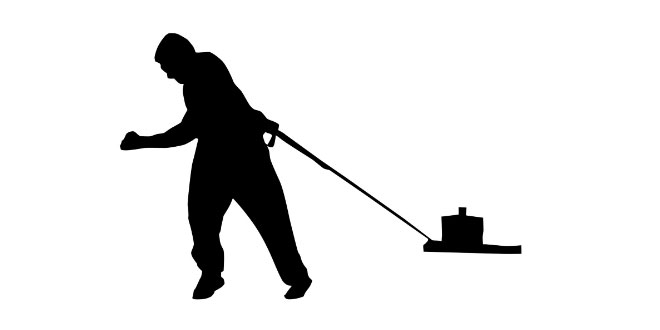Question: Does work done depend upon the velocity of the body.
Answer: No.
Question: State the law of conservation of energy.
Answer: It states that energy can neither be created nor destroyed. It can only change its form.
Question: In a tug-of-war one team gives way to the other. What work is being done and by whom?
Answer: The winning team does work. The work is equal to the product of the resultant force and the displacement undergone by the losing team.
Question: What will cause greater change in kinetic energy of a body? Changing its mass or changing its velocity?
Answer: Changing its velocity.
Question: List two essential conditions for work to be done.
Answer: (i) A force must act and (ii) There should be displacement in the body.
Question: When is 1 joule of work said to be done?
Answer: When a force of 1 newton acting on a body displaces it in its own direction.
Question: What is the SI unit of work done and power?
Answer: Joule and Watt.
Question: What is power? What is its SI unit?
Answer: It is defined as the rate of doing work. Its unit is watt.
Question: Find the energy in kWh consumed in 10 hours by a machine of power 500 W.
Answer: W = P x t = 500 x 10 = 5000 Wh – 5 kWh.
Question:. When is work said to be done against the force of gravity ?
Answer: When a body lifted the work is done against the force of gravity.
Question: Write an expression for the work done in lifting a body of mass ‘m’ through a vertical height ‘h’.
Answer: Work done W = mgh, where g is acceleration due to gravity.
Question: When a book is lifted from a table, against which force work is done?
Answer: Work is done against the force of gravity.
Question: Will work be done by a man who pushes a wall?
Answer: No.
Question: What is the work done when the force acting on the body and the displacement produced in the body are at right angles to each other?
Answer: Zero.
Question: Is it possible that some force is acting on a body but still the work done is zero?
Answer: Yes, when force acts at an angle of 90° with the displacement.
Question: What is the work done on a body moving in a circular path?
Answer: Zero, because force and displacement are perpendicular to each other.
Question: Does every change in energy of the body involve work?
Answer: Yes.
Question: A force of 7 N acts on an object. The displacement is, say 8 m, in the direction of the force. Let us take it that the force acts on the object through the displacement. What is the work done in this case?
Answer: Given, displacement = 8 m,
Force = 7N
Now, Work done = Force x Displacement
= 7 x 8 = 56 J
Question: When do we say that work is done?
Answer: Work is said to be done when a force causes displacement of an object in the direction of applied force.
Question: Write an expression for the work done when a force is acting on an object in the direction of its displacement.
Answer: Work done = Force x Displacement
Question: A pair of bullocks exert a force of 140 N on a plough. The field being ploughed is 15 m long. How much work is done in ploughing the length of the field ?
Answer: Work done = Force x Displacement = 140 x 15 = 2100 J
Question: What is the kinetic energy of an object?
Answer: The energy possessed by a body by virtue of its motion is called kinetic energy.
Question: Write an expression for the kinetic energy of an object.
Answer: The expression is KE = 1/2 mv2, where ‘m’ is the mass and V is the velocity of the body.
Question: Define 1 watt of power.
Answer: When a work of 1 joule is done in 1s, the power is said to be one watt.
 Class Notes NCERT Solutions for CBSE Students
Class Notes NCERT Solutions for CBSE Students



